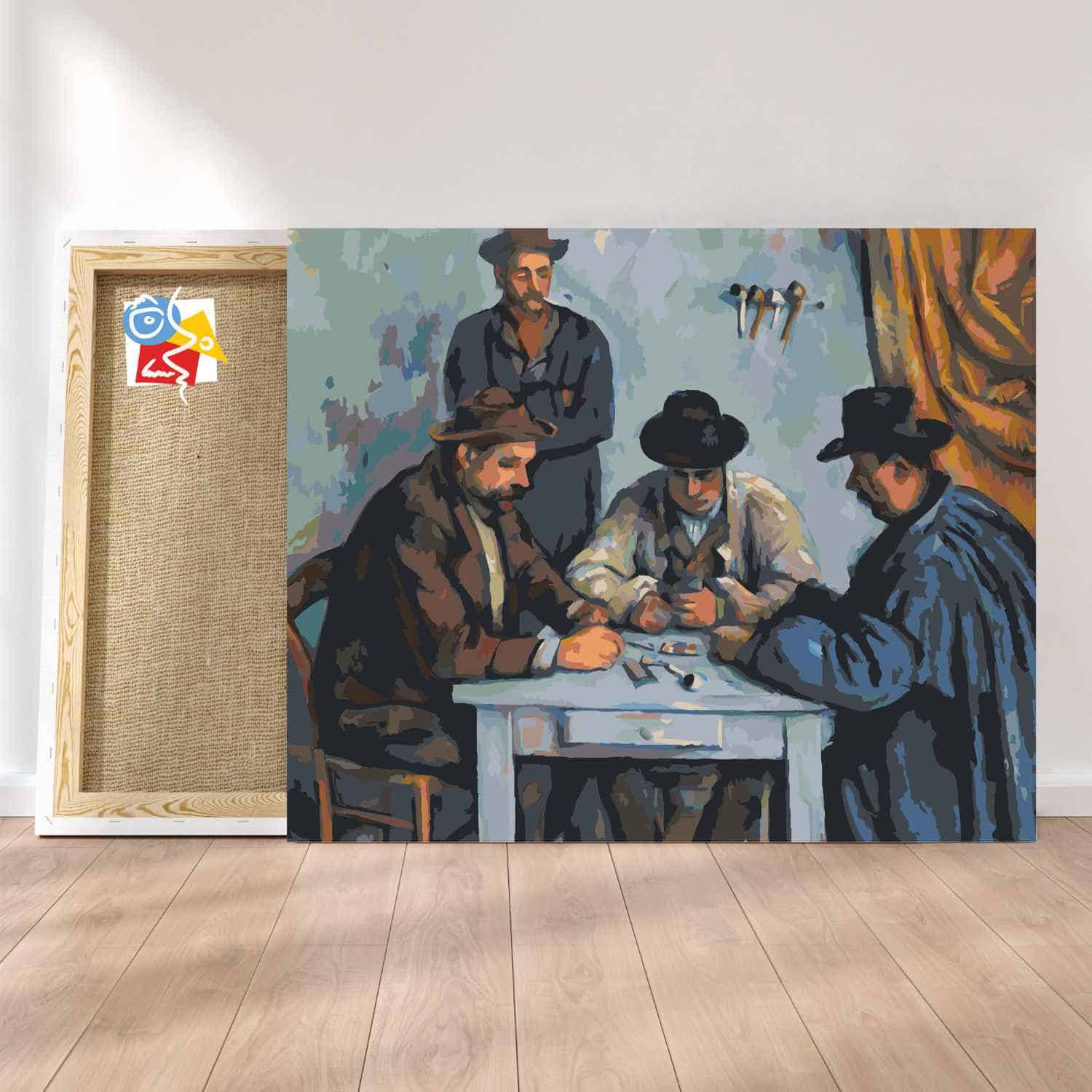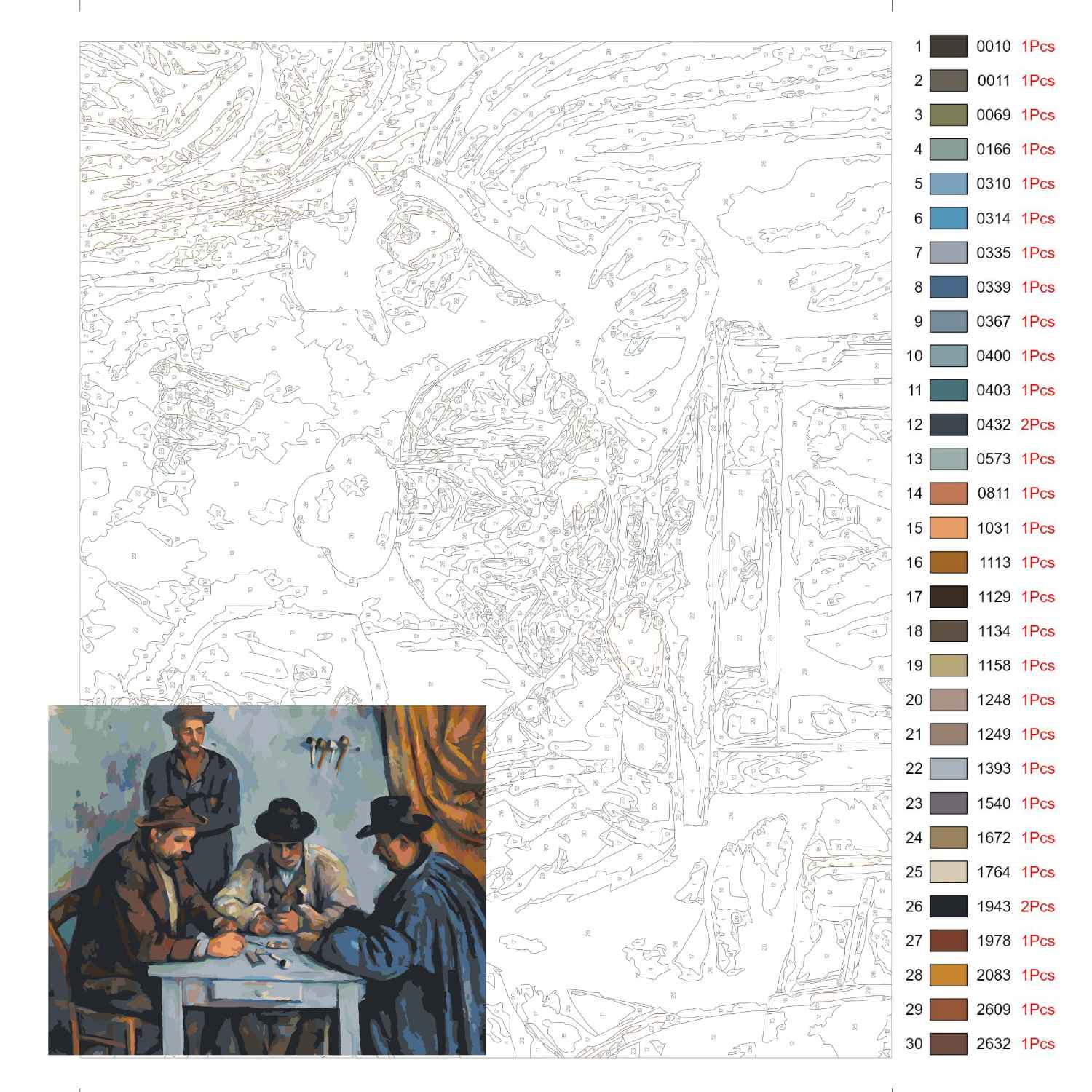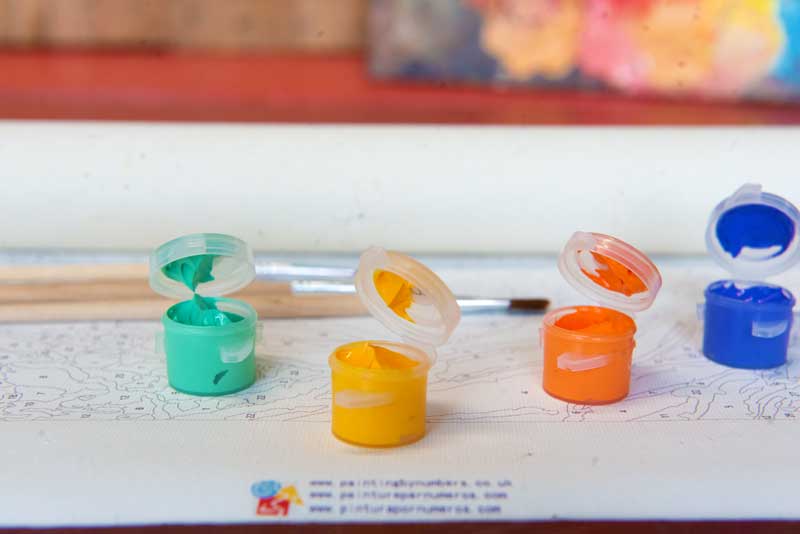Painting by Numbers - Paul CÚzanne
Paul CÚzanne came from a wealthy family in Aix-en-Provence and studied literature and then law at his father's request, which he abandoned to go to Paris to study painting. Rejected from the Beaux-Arts, he enrolled in a school where he developed a great interest in the works of Delacroix, Courbet, Rubens and Velasquez.
CÚzanne painted his first canvases in which he let a romantic inspiration and a taste for allegories shine through. He also tried, through still life paintings, to paint more closely to realism and then developed his technique and composed his first impressionist paintings.
His paintings received only a very moderate reception from the public at various exhibitions. Distressed by this lack of public understanding, CÚzanne chose to break away from the Parisian Impressionist milieu and returned to his native Provence, where he then lived essentially alone. The artist devoted himself to his art and painted several hundred pictures between 1880 and 1890. He departed from the impressionist technique in his search for a synthesis of forms, the essence of which he tried to capture and reveal the geometric framework.
CÚzanne became the pioneer of modern art. Although not very popular with the public, the retrospective exhibition of 150 of his works organised by the art dealer Ambroise Vollard in 1895 was a great success among those involved in the field: artists and critics. From then on, many salons exhibited the painter's paintings and his reputation continued to grow. CÚzanne then became a source of inspiration for young artists and was also subsequently recognised as being at the forefront of the Cubist movement.






